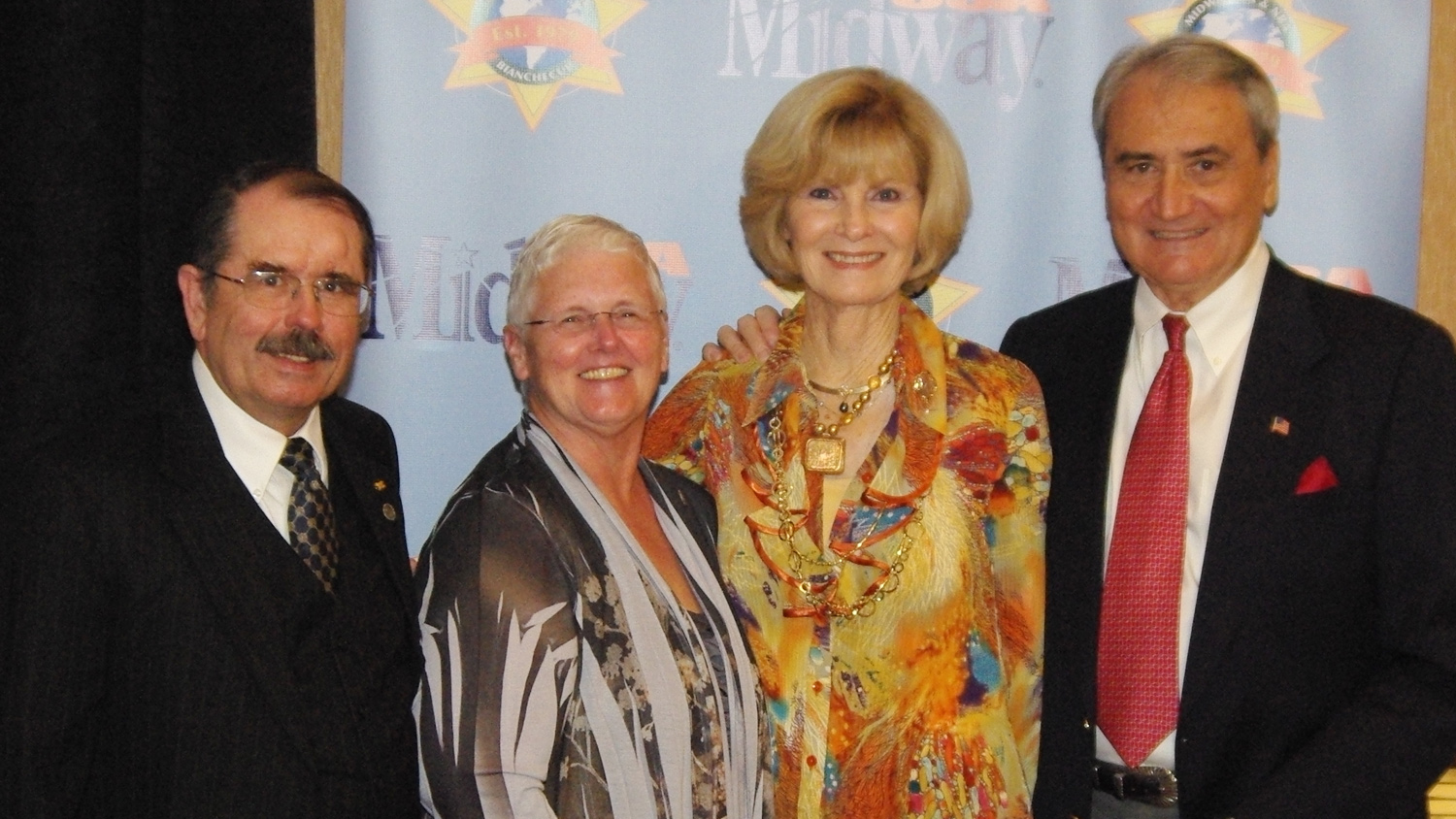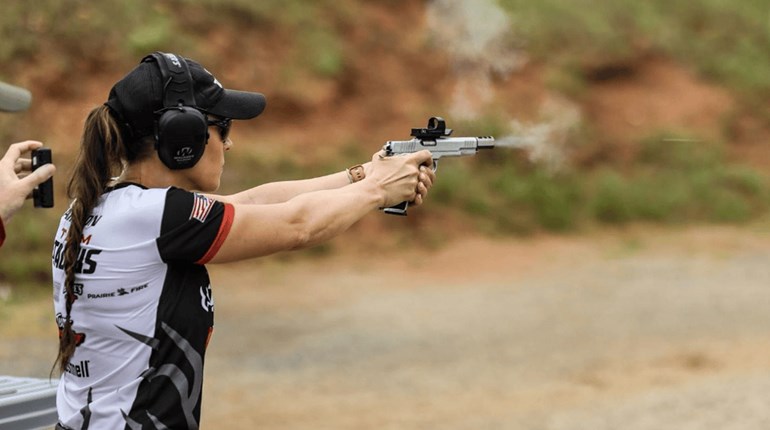
The NRA Bianchi Cup, the world's most prestigious pistol championship, was the brainchild of John Bianchi and Ray Chapman, who developed the match as a mishmash of three popular pistol disciplines: IPSC, Police Pistol Combat and NRA Bullseye (Precision Pistol). Bianchi's idea was to give back to the handgun industry that supported him as a holster maker.
In 1984 the NRA stepped in, sanctioning the Bianchi Cup as the NRA National Action Pistol Championship. Held at Green Valley Rifle and Pistol Club for over 40 years, the Bianchi Cup has long served as an incubator and testbed for pistol innovation—making it a darling of competitive pistol shooters worldwide.

Here is a behind the scenes look at what makes the Bianchi Cup run so smoothly, year after year.
Evolution of Bianchi Cup Equipment
An overlooked factor in the success of this match is the fact that the equipment used to run the four Bianchi Cup events is evolving alongside the pistols used to shoot them.
John Gordon, a Columbia, MO, native, has been coming to the Bianchi Cup since 1980. He's had the honor of serving as a range official, deputy match director, match director, referee and this year—a member of the protest committee. Armed with a keen mind, Gordon has seen Bianchi grow over the years. He points out that modernization of equipment is a key factor that helped propel this match to lofty heights.
"The match equipment—the Mover, the Plates, the target turners, etc. has evolved over the years to meet the needs of this match as more people started to attend," says Gordon. "For example, we switched from a target control system that was run off of pulley and string to a rail system for the Mover. Now, there are three of these systems in use at Green Valley."

In the past for the Falling Plates, range officers had to manually reset each plate by hand. With hundreds of shooters, this task can become extremely tedious.
"Now, an air pressure system resets the plates each time," says Gordon. "This makes it less tiring for range officers, who are already putting in a full day just working at Bianchi."
Turning targets were a key innovation, as they allow for easier identification of late hits on the NRA AP-1 tombstone target.
"Late hits can be seen on a turning target because it's like a tear, not a hole. The bullet hits paper mid-turn, and the longer the tear, the later the hit."
Hard-working Match Staff
It's certainly not just the equipment though, that make the Bianchi Cup run smoothly. There are scores of hard-working people—both on the range and behind the scenes—that make this match happen every year. Without such high-caliber staff helping the NRA, there would be no Bianchi Cup.

There are two key members of the Bianchi Cup staff in particular whose efforts do not go unnoticed. Cheryl and John Rickards of Fairfax, VA, have been involved with just about every single one of the 52 sanctioned NRA Championships, including the NRA National Action Pistol Championship, a.k.a. the Bianchi Cup. They are a prime example of loyal NRA personnel being paramount to the successful outcome of an event. John serves as a referee and unofficial photographer, and Cheryl, who carries the official title of entry officer, also helps in other ways with a dedicated eye for detail.

Pat Cooper of Kansas City, MO, has been a member of the Bianchi Cup staff since 1999. Her first role was as a range officer for the Barricade event. Cooper became the first female Bianchi Cup match director in 2014, a role in which she continues to flourish to this day.
"The people that you have the opportunity to meet and work with at the Bianchi Cup are amazing," says Cooper, adding, "There are talented competitors from all over the world that you watch and learn from."

Additionally, this year marked the debut of new Bianchi statistical director George Mowbray, who hails from Lake Charles, LA. While this is his first year as an official member of the Bianchi Cup match staff, he is not a stranger to the match—shooting at Bianchi for the first time in 1991. Mowbray has worked tirelessly to improve NRA Action Pistol as a sport. One way was spending a week at NRA HQ at his own expense to assist with admin duties prior to this year's Bianchi Cup. Another way he does this is by performing match coordinator duties for his own wildly popular Action Pistol Regional Championship, the Crawfish Cup.
Mowbray echoes John Bianchi's own sentiments on wanting to give back.
"This is my way of giving back to a sport that has provided me with so much," says Mowbray.
The people mentioned above are just a small selection of the many hard-working individuals that contribute to this match every year. Former NRA Bianchi Cup coordinator Damien Orsinger agrees that these humble folks are the backbone of the match.
"From stuffing competitor packets, to running scorecards from the range to the stat shack, the NRA Bianchi Cup would not go so smoothly year after year without the tireless effort and dedication of the range staff," says Orsinger.

Don Martin, of Columbia, MO, is a member of the NRA Action Pistol committee and has been the Bianchi Cup chief referee for many years. A bastion of Bianchi Cup history, his opinion is greatly valued by his peers.
Talking about this year's Bianchi Cup, Martin says, "Overall, this year was a great match. Competitors were upbeat and looking forward to a bright future."
Do you know someone who is instrumental in making a match run smoothly? Let us know by emailing [email protected] and you may be reading about it in the future!

































